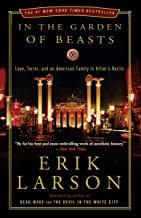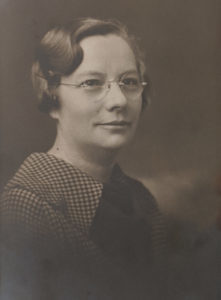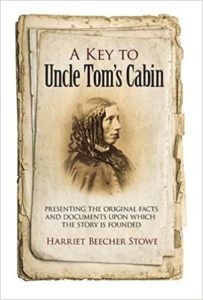Phyllis Zimbler Miller's Blog: Phyllis Zimbler Miller Author
February 7, 2021
Reading Literary Fiction Boosts Leadership Qualities
 According to the article “Reading Fiction Boosts Leadership Qualities” by Emanuele Castano in the December 2020 U.S. Naval Institute’s Proceedings:
According to the article “Reading Fiction Boosts Leadership Qualities” by Emanuele Castano in the December 2020 U.S. Naval Institute’s Proceedings:
When we read fiction, our minds treat the characters as if they were actual human beings. Therefore, it is as if we were practicing social skills in real life.
Yet Castano says that all fiction is not created equal — the benefits accrue apparently from literary fiction rather than popular fiction:
Readers of literary fiction have to deal with ambiguities and uncertainties and therefore have to make a greater interpretive and inferential effort.
Here is how Castano defines literary fiction:
There are a few aspects that differentiate literary from popular fiction and account for these effects. One is whether meaning is delivered to the reader by the author or has to be constructed by the reader. Popular fiction provides ready-to-wear, unequivocal meanings to readers; it maintains and reinforces the culturally learned and socially shared expectations that the readers possess about the world and other individuals (e.g., personality type) and groups (e.g., stereotypes).
On November 1, 2020, I wrote the blog post “In Defense of Uncle Tom’s Cabin”. Although it is probable that by Castano’s definition UNCLE TOM’S CABIN by Harriet Beecher Stowe would be classified as popular fiction (in 1852 when the novel was first published), the novel — inspired by actual events — does not maintain and reinforce “the culturally learned and socially shared expectations that the readers possess about the world.” That difference is what made this novel such a force for change when it was published.
Castano also says:
Another aspect that differentiates popular and literary fiction is their relative emphasis on the plot versus characters. Popular fiction is chiefly concerned with the plot; its characters provide clear anchors around which the plot can be developed. Literary fiction is more concerned with the inner life of the characters: their idiosyncrasies, uniqueness, and consciousness.
Here is the link to Castano’s entire article. Although nonfiction, it does offer much food for thought.
Note: Emanuele Castano is a faculty member in the Department of Psychology and Cognitive Science, University of Trento, Italy, and a researcher at the Institute for Biomedic Research and Innovation, National Research Council, Italy. He has published more than 50 articles in the highest ranking scientific journals and has consulted for international organizations and institutions.
January 27, 2021
What Holocaust Survivors Teach Us
Guest post by Howie Beigelman
Howie Beigelman is executive director of Ohio Jewish Communities, the government advocacy, public affairs, and community relations voice of Ohio’s eight Jewish federations and their 150 nonprofit agencies.
 Really? Didn’t everybody know?
Really? Didn’t everybody know?
There are moments of shiva — the seven day mourning period Jewish tradition allows for close relatives — that stick with you even so many years later. One of those was when a very close friend remarked on my eulogy. This friend, who had known my father for decades, said to me ,“I didn’t realize your dad was a Holocaust survivor.”
Not realize? How was that possible?
Growing up the child of a survivor everything we did, every decision we made, had cosmic significance. Perhaps not quite every. It didn’t (usually) extend to what we ate for breakfast. But everything else? What brands of appliances we bought. Which airlines we flew. Where we went on vacation. How we read a newspaper, and sometimes even which newspapers we read. What news anchors we watched. Which rallies and demonstrations we went to. How we viewed politics, activism, and how we voted.
Every conversation we had, every choice we made silently, unconsciously filtered through the lens of a survivor and the lenses of history, justice, and of Never Again.
Somehow all of that burden escaped my friend’s notice. We talked about it as a family that day, and I have thought about it since quite often.
To us, his family, my father was first and foremost a survivor of the Nazi’s Final Solution. It indeed weighed on his every decision, colored his entire worldview, and impacted all he did. That was the face we – his family — saw at all times. But to everyone else — everyone else who wasn’t a survivor or the family of a survivor themselves — he showed a different face.
The face of a proud immigrant, a determined small businessman, a dedicated parent, and a passionate Jew.
With that face he looked just like millions of other Americans.
The burden and the trauma that we saw each day he kept behind that public face.
There are many lessons we take today, International Holocaust Remembrance Day (January 27). Lessons of memory, of tolerance, and of calling out and confronting evil. One lesson we sometimes overlook is the strength of the survivors. They rebuilt lives often from nothing. They traveled across oceans and put down new roots on new continents, in new countries. They learned new languages, found jobs, and built new businesses, homes, and communities. They learned to live again and to love once more.
It’s worth our taking part of today to remember that quiet personal resolve and strength too. The resolve to Always Remember. The strength to endure despite the never ending pain. The power of personal, private memory and all the choices it engenders. And the decision to put on a public face and be part of both community and country.
We owe much to our survivors and liberators. Let’s add this to the list of things we owe the survivors — the ability to face the world as they do.
Note from Phyllis Zimbler Miller: Information about the free nonfiction Holocaust theater project is at www.ThinEdgeOfTheWedge.com
November 25, 2020
Monthly Sci Fi Friday for Sci Fi Fans
 On November 13 I took part for my first time on the monthly Sci Fi Friday Zoom meeting. As the majority of the participants including the founder of the monthly Zoom meeting were in Germany, the meeting was luckily held in English. (Even when I lived in Munich many years ago my German level would never have been good enough for participation in German in this meeting.)
On November 13 I took part for my first time on the monthly Sci Fi Friday Zoom meeting. As the majority of the participants including the founder of the monthly Zoom meeting were in Germany, the meeting was luckily held in English. (Even when I lived in Munich many years ago my German level would never have been good enough for participation in German in this meeting.)
The monthly meetings — announced on Facebook — grew out of the efforts of the producers of the sci fi film GUARDIAN to raise production funds via Indiegogo. The Indiegogo campaign includes this information about GUARDIAN:
The Story
When the artificial intelligence in control of a military space station decides to launch an unprovoked, all-out nuclear strike on an enemy nation, it is up to the AI’s creator and a maintenance technician to stop it from annihilating half the globe.
The Reason
Guardian is not just a film about an artificial intelligence going haywire. It is about an almost maternal relationship between E.L.I. and his creator Diane Colton, who lost her own son in an enemy attack, and now considers E.L.I. as more than just an artificial being. And it is that relationship that both complicates matters, but also offers hope in a crisis of global proportions.
Our goal with this film is to blend breathtaking sci-fi action with a touching emotional story that has universal resonance with our audience. This is not just another short film, but the seed from which we hope to grow an ongoing story that can be told in a serialized format.
Yes, I contributed to the Indiegogo campaign, and I did so in part because this is the type of sci fi story that truly appeals to me — a story set in the future that asks questions about our present.
While we humans usually trust on blind faith that innovations in artificial intelligence will improve conditions for us, we have no guarantees that this is going to be true. It is our responsibility as ordinary citizens of the world to keep an eye on what is being done behind security doors in the name of advancement. And being a fan of science fiction can encourage us to do this.
If you are interested in sci fi in general or in sci fi filmmaking, consider joining the monthly Sci Fi Friday.
November 16, 2020
75th Anniversary of the First Nuremberg Nazi War Crime Trial Is on November 20, 2020
 While I spend a great deal of my time reading both nonfiction and historical fiction books for my various writing projects on Nazi Germany, I felt the article by Ben Knight in the November 16, 2020, edition of the Deutsche Welle (dw.com) provided information important to be shared:
While I spend a great deal of my time reading both nonfiction and historical fiction books for my various writing projects on Nazi Germany, I felt the article by Ben Knight in the November 16, 2020, edition of the Deutsche Welle (dw.com) provided information important to be shared:
Nuremberg Trials: An important step for Germany to confront its Nazi past
Germany is marking the 75th anniversary of the first Nuremberg trial. Initially, the trials, military tribunals by occupying powers, were barely respected in a country that wanted to forget. But that attitude changed.
I know that I myself frequently refer to the Nuremberg trials as if they all took place at one time, which is not the case. So here from Wikipedia is a short explanation of the various trials (boldface is mine):
The Nuremberg trials were a series of military tribunals held after World War II by the Allied forces under international law and the laws of war. The trials were most notable for the prosecution of prominent members of the political, military, judicial, and economic leadership of Nazi Germany, who planned, carried out, or otherwise participated in the Holocaust and other war crimes. The trials were held in Nuremberg, Germany, and their decisions marked a turning point between classical and contemporary international law.
The first and best known of the trials was that of the major war criminals before the International Military Tribunal (IMT). It was described as “the greatest trial in history” by Sir Norman Birkett, one of the British judges present throughout. Held between 20 November 1945 and 1 October 1946, the Tribunal was given the task of trying 24 of the most important political and military leaders of the Third Reich. Primarily treated here is the first trial, conducted by the International Military Tribunal. Further trials of lesser war criminals were conducted under Control Council Law No. 10 at the U.S. Nuremberg Military Tribunal (NMT), which included the Doctors’ trial and the Judges’ Trial.
The categorization of the crimes and the constitution of the court represented a juridical advance that would be followed afterward by the United Nations for the development of an international jurisprudence in matters of war crimes, crimes against humanity, and wars of aggression, and led to the creation of the International Criminal Court. For the first time in international law, the Nuremberg indictments also mention genocide (count three, war crimes: “the extermination of racial and national groups, against the civilian populations of certain occupied territories to destroy particular races and classes of people and national, racial, or religious groups, particularly Jews, Poles, and Gypsies and others.”)
I have just finished reading Erik Larson’s 2011 nonfiction book IN THE GARDEN OF THE BEASTS: “The time is 1933: the place, Berlin, when William E. Dodd becomes America’s first ambassador to Hitler’s Germany in a year that provided to be a turning point in history.”
The book is an up-close-and-personal look based on documents and diaries of how the political elite in Washington chose to view the first-hand reports of the increased ferociousness and fanaticism of Hitler in the years leading up to Nazi Germany invading Poland and starting WWII.
I highly recommend this nonfiction book for readers who would appreciate an historical view of the beginnings of the fanaticism that led ultimately to the Nuremberg trials.
I also highly recommend for teens and adults Liza Wiemer’s just-published YA novel THE ASSIGNMENT based on a true story. You can read my guest post — at the blog of author Joylene Nowell Butler — about THE ASSIGNMENT, which Wiemer begins with this warning:
What you’re about to read is a fictionalized story based on an actual assignment given to students in a New York high school education program. It’s an assignment that could be given anywhere.
Any country. Any town. Any school. Even yours.
And check out my free nonfiction theater project www.ThinEdgeOfTheWedge.com to combat anti-Semitism and hate.
November 1, 2020
In Defense of UNCLE TOM’S CABIN
I am a huge fan of the 1852 novel UNCLE TOM’S CABIN written by white abolitionist Harriet Beecher Stowe, a member of a famous religious family.
In the novel the main character of the slave Uncle Tom remains steadfast in his belief in the goodness of Christianity in order to rise about the brutality of slavery and become an heroic figure. While the term “Uncle Tom” 168 years after the publication of Stowe’s novel has come to have a negative connotation, only those who have not read the novel would so misinterpret what Stowe wrote.
During the lockdown I have written four one-hour episodes for a mini-series of the novel. I have not added anything to the novel — I have only “channeled” Stowe as she was a witness to the events she describes.
And the pushback from some people to this proposed mini-series project has been interesting, especially given that I suspect these people have never read the novel and only know the negative meaning given by some to the term “Uncle Tom.”
What is more, in this very turbulent time in 2020 with a spotlight on race relations, I believe it is very important for all Americans to learn about slavery in the decade before the Civil War.
Adam Kirsch’s October 30, 2020, essay “The Fiction of American Democracy: Great writers have always challenged us to measure the compromised reality of politics against our national ideals” in The Wall Street Journal states:
To be political, however, a novel doesn’t have to deal with elections and campaigns… In terms of sheer political impact, probably the most important novel in American history is “Uncle Tom’s Cabin,” published by Harriet Beecher Stowe in 1852 as a direct response to the Fugitive Slave Act, which required Northern states to apprehend escaped African-Americans and return them to bondage in the South.
Stowe drew a direct connection between the suffering of Eliza, a runaway slave chased across an icy river by slave-hunters, and the politicians who voted for the Act. When the fictional Senator Bird defends his vote to his wife, saying “we mustn’t suffer our feelings to run away with our judgment,” she adamantly insists that Christian charity is more important than preserving the Union: “Now, John, I don’t know anything about politics, but I can read my Bible; and there I see that I must feed the hungry, clothe the naked, and comfort the desolate; and that Bible I mean to follow.”
Senator Bird’s wife is referring to the Fugitive Slave Act of 1850 as described in Wikipedia:
The Fugitive Slave Act or Fugitive Slave Law was passed by the United States Congress on September 18, 1850, as part of the Compromise of 1850 between Southern slave-holding interests and Northern Free-Soilers.
The Act was one of the most controversial elements of the 1850 compromise and heightened Northern fears of a “slave power conspiracy”. It required that all escaped slaves, upon capture, be returned to their masters and that officials and citizens of free states had to cooperate. Abolitionists nicknamed it the “Bloodhound Bill,” for the dogs that were used to track down runaway slaves.
The Act contributed to the growing polarization of the country over the issue of slavery, and is considered one of the causes of the Civil War.
As to the accuracy of Stowe’s novel, she published a companion nonfiction book the following year. From the Amazon page of Harriet Beecher Stowe’s nonfiction book A KEY TO UNCLE TOM’S CABIN:
In 1852 Harriet Beecher Stowe published Uncle Tom’s Cabin, an instant classic that received overwhelming acclaim by Northerners and other abolitionist readers. Southerners, conversely, strongly denied the novel’s accuracy. The following year Stowe answered pro-slavery critics with this unique bestseller, a meticulous and thoughtful defense of her work, which cites real-life equivalents to her characters.
Southern readers were further incensed by this follow-up volume, their wrath in no small part inflamed by a Yankee woman’s presuming to tell men what to think. A critical aspect of Stowe’s Key is her critique of the law’s support of not only the institution of slavery but also the mistreatment of individual slaves. As in the original novel, her challenge extends beyond slavery to the law itself. American society’s first widely read political novel, Uncle Tom’s Cabin influenced the development of the nation’s literature, particularly in terms of protest writing. This supplement to the novel offers valuable insights into a historical and literary landmark.
If anyone is interested in this powerful novel being brought to the screen, you can email me at pzmiller@gmail.com to discuss the proposed project.
And before you push back at my praise of UNCLE TOM’S CABIN — read the novel (not the CliffsNotes, nor view any movie version) — the actual 1852 novel! (Not an associate link.)
And if you really need convincing of the accuracy of Stowe’s 1852 depiction — read the nonfiction A KEY TO UNCLE TOM’S CABIN. (Not an associate link.)
October 6, 2020
Small Steps Can Lead to Big Steps: Wear a Mask
 Today during a panel discussion of which I was a participant we talked about small steps that could lead to big steps. When asked for an example, I mentioned noticing the people around you so that, if someone is struggling with a door (and both that person and you are wearing a mask), you could open the door for that person. Such a small step!
Today during a panel discussion of which I was a participant we talked about small steps that could lead to big steps. When asked for an example, I mentioned noticing the people around you so that, if someone is struggling with a door (and both that person and you are wearing a mask), you could open the door for that person. Such a small step!
As I continue to do research for my Holocaust projects, I am always amazed by small acts of kindness. In the book I just read — A LUCKY CHILD: A MEMOIR OF SURVIVING AUSCHWITZ AS A YOUNG BOY by Thomas Buergenthal, the “lucky child” and other survivors of the death camp Auschwitz are shipped for days with no food or water in open cattle cars in freezing winter weather (January 1945). When the train passes through Czechoslovakia — people on bridges throw loaves of bread down into the open cattle cars. A small step? Buergenthal credits this act for saving his life and the lives of many other starving prisoners.
Why am I thinking about small steps today? Because small steps such as always wearing masks to protect yourself and those around you can lead to big steps — such as slowing the rate of transmission of COVID. If we were each given a choice between wearing a mask and saving one life — or not wearing a mask and infecting one person who then dies — I would hope we would all wear masks. So what is needed today to convince everyone to wear a mask?
While I do not discuss politics, I cannot help being very upset when I see the photos of the Rose Garden ceremony to announce the Supreme Court nominee. How can all those supposedly important people be so callous as to sit close to each other and most not wear masks? What is the use of all our charitable giving and nonprofit organization support if we can’t perform the simplest health safety act for ourselves and others?
Here is a very short section from my free nonfiction play THIN EDGE OF THE WEDGE:
How many tiny acts of kindness saved Jews and others — tiny acts done by righteous individuals whose names we will never know?
I learned of a young Greek Jewish man saved by just such a small act of kindness. He was in a Nazi detention camp in Greece where the Jews awaited the cattle car transportation to their deaths in Auschwitz. He was taken outside the camp by a German guard to work, and a young non-Jewish Greek woman purposely distracted the German guard with flirting. The young Jewish man seized the moment to escape. The name of his savior will never be known.
While wearing a mask is a small step not designed to save people from the Nazi death jaws, our wearing a mask can encourage others to wear masks — and those small steps can lead to reducing the number of COVD-infected and COVID-deceased people. (The life you might save may could be your own!)
Let’s all commit to taking small steps whenever we can — and to WEARING A MASK!
September 18, 2020
Reflections on My Commitment to Holocaust Education
 September 11th this year was the 110th anniversary of my maternal grandmother Fannie – Faige – Dumes at the age of 14 arriving at Ellis Island from Latvia (this photo of Fannie is from 1935). As I’m named for Fannie, I never met her, although I’ve recently been thinking about her.
September 11th this year was the 110th anniversary of my maternal grandmother Fannie – Faige – Dumes at the age of 14 arriving at Ellis Island from Latvia (this photo of Fannie is from 1935). As I’m named for Fannie, I never met her, although I’ve recently been thinking about her.
This is partly because the Dumes family is having a Zoom reunion on October 18 as a temporary solution to canceling the scheduled in-person reunion. As part of the Zoom reunion, each of the seven branches of the children of Fannie’s parents has to provide a 10-minute video. I’m the coordinator for Fannie’s branch, so I’ve been digging into the family documents in my possession.
As immigrants my grandmother and her husband Max Fishman (from Tiraspol, Ukraine), who together ran a junkyard in Princeton, Indiana, did not have a rose garden. But then they weren’t murdered by the Nazis as were some of the Dumes relatives still in Latvia.
It is partly out of gratitude that my ancestors had the courage and wisdom to “get out of Dodge” that I am so committed to Holocaust education for middle school and high school students. I want young people to know the history of how unaddressed small acts of anti-Semitism and hate grew into larger and larger acts until it was too late to stop the Final Solution.
Understanding this history can help young people today develop the courage and wisdom to stand up for what is right. No, they don’t have to be Oskar Schindler or Martin Luther King Jr. Yet they can find ways, for example, to stand up to bullies in school or insist that a minority viewpoint in class not be disparaged. In other words, we can help make a rose garden here in the U.S.
THIN EDGE OF THE WEDGE* free nonfiction theater project
To this end I co-founded the free nonfiction theater project ThinEdgeOfTheWedge.com to combat anti-Semitism and hate. The project is centered on firsthand survivor and savior testimonies I published as the editor of the monthly literary supplement of the Philadelphia Jewish Exponent in the 1970s.
The accompanying project resource material includes questions that young people can consider today:
A. When you see the graffiti of a Nazi swastika, do you know what this symbol represents? How do you think it makes people feel who have been subjected to anti-Semitism and hate? What does displaying this symbol say about our classroom, our school and our society as a whole?
B. Do you read/hear the news of anti-Semitic and racist acts against people and property and only think “That’s too bad” without doing anything against these acts?
C. Do you think — if the attacks are not against your ethnicity or gender identification — that you are safe?
D. Do you think that one person cannot make a difference? Can you think of an example from your own life where one person made a difference?
During this time when many young people are studying remotely, it could be a good opportunity to check out the THIN EDGE OF THE WEDGE resources including the reading list at www.phylliszimblermiller.com/holocaust-reading-list/ And it is also a good opportunity for young people to help make a rose garden in the U.S. – promoting understanding of others and equal rights for all.
*Definition of “thin edge of the wedge”: A minor harmful change that starts a chain of more and more changes resulting in dangerous consequences.
September 1, 2020
Sept. 1, 2020 — 81 Years Since Nazi Germany Invaded Poland
 Every year on Sept. 1 — I once again reflect on how the gates of escape from what would become Nazi-occupied Europe swung shut on this day of Sept. 1, 1939, when Nazi Germany attacked Poland.
Every year on Sept. 1 — I once again reflect on how the gates of escape from what would become Nazi-occupied Europe swung shut on this day of Sept. 1, 1939, when Nazi Germany attacked Poland.
This morning of Sept. 1, 2020, I was especially concerned when I read this article by Toby Axelrod:
“Hundreds associated with anti-Semitic movement attempt to break into German parliament building” — AUGUST 31, 2020
(JTA) — Several hundred protesters, some associated with an anti-Semitic movement, stormed through a group of police officers to the doors of Germany’s parliament building in Berlin before being removed by other officers.
The demonstrators from the Reichsburger (Reich Citizens) movement were among some 38,000 people who showed up for a mostly peaceful rally Saturday to protest the country’s coronavirus restrictions.
The Reichsburger, which had some 16,500 members as of two years ago, has been described as an assembly of groups and individuals who sometimes espouse violence in their “fight against the Federal Republic of Germany.” They believe that the 1937 German borders still exist, and many of them deny the Holocaust happened.
As someone who does a great deal of reading about Nazi Germany and the Holocaust, I am all too aware of how the Nazis party started out small — and grew to take over the entire country of Germany and then many other countries. Obviously I found this news item very troubling.
NEVER AGAIN EDUCATION ACT SIGNED INTO LAW
On the other hand, I was pleased to read in the July/August 2020 edition of Hadassah Magazine:
On May 29, America’s commitment to ensuring that future generations learn the important lessons of the Holocaust marked a turning point when the Never Again Education Act was signed into law by President Trump. It was the end of a process that began more than two years earlier, when Hadassah adopted the effort to strengthen Holocaust education as its own.
Representative Carolyn Maloney of New York introduced the Never Again Education Act in the House of Representatives and, after the legislation was enacted, called Hadassah’s support and advocacy for it “instrumental.” Hadassah managed to keep the bill bipartisan and increase the number of supporters 13-fold from the original number of co-sponsors. With the organization’s continued focus on the bill and an outpouring of support from across the country, the United States House of Representatives passed the bill on January 27 of this year — International Holocaust Remembrance Day — by a vote of 393 to 5.
In the Senate, Hadassah recruited senators of both parties to support the bill, including co-sponsors Senators Jacky Rosen (D-Nev.), Kevin Cramer (R-N.D.), Marco Rubio (R-Fla.) and Richard Blumenthal (D-Conn.). After 10 months of lobbying by Hadassah and a coalition of organizations that it led, the Senate bill had amassed nearly 80 co-sponsors. It passed the Senate by unanimous consent on May 13.
The new federal program, which includes awarding $10 million in grants for Holocaust education to schools, will help reverse the disturbing trend of students graduating from high school without any understanding of what the Holocaust was, how it happened and to whom and why. Hadassah also hopes that it will help to undercut the appeal of hate groups and communities that traffic in anti-Semitism.
As a Lifetime Member of Hadassah, I have now written to the organization’s headquarters to offer my free nonfiction theater play project developed to combat anti-Semitism and hate — see www.ThinEdgeOfTheWedge.com and www.ThinEdgeOfTheWedgeProject.com
And, finally, you might like to read the blog post I wrote four years ago today — the day after I returned from Germany for the first time since being stationed in Munich with the U.S. Army from Sept. 1970 to May 1972 — “Reflections on Sept. 1 of 1939 and 2016” — that includes information on the memorials in Berlin to the murdered Jews and murdered Sinti and Roma (formerly known as Gypsies).
We all must remember that SILENCE allows evil to flourish — and we all must speak up against that flourishing!
August 17, 2020
The Nazi Roundup of Greek Jews and a Jewish Netflix
 When I read on August 12, 2020, of the launch that day of a Jewish Netflix — www.ChaiFlicks.com — I immediately subscribed and started my wish list of films I wanted to see. The list included CLOUDY SUNDAY — the 2015 film described on imdbpro.com:
When I read on August 12, 2020, of the launch that day of a Jewish Netflix — www.ChaiFlicks.com — I immediately subscribed and started my wish list of films I wanted to see. The list included CLOUDY SUNDAY — the 2015 film described on imdbpro.com:
During the tumultuous 1943, against the backdrop of a German-occupied Thessaloniki, two star-crossed lovers struggle to surmount prejudice and fear, as the brutalities against the town’s persecuted Jewish community escalate.
I especially wanted to see this film about the Nazi persecution and deportation of Greek Jews because I had included information on Greek Jews in my Holocaust nonfiction play Thin Edge of the Wedge — and I had also read a firsthand account of one of the very few Greek Jews from Thessaloniki who survived Auschwitz:
A LITER OF SOUP AND SIXTY GRAMS OF BREAD: THE DIARY OF PRISONER NUMBER 109565 by Heinz Salvator Kounio; adapted and translated by Marcia Haddad Ikonomopoulos (2003) (originally published in Greece in 1981)
In addition, I was currently finishing reading the nonfiction book SALONICA, CITY OF GHOSTS: CHRISTIANS, MUSLIMS AND JEWS (Salonica is another name for Thessaloniki). I read the book’s material on the Nazi persecution and deportation of Jews and then, only a few hours later, watched the movie CLOUDY SUNDAY covering the same period.
For those people whose knowledge of the Holocaust doesn’t extend to the Greek Jews, I would recommend the film CLOUDY SUNDAY. While it is important to learn about the six million Jews murdered by the Nazis, the Greek Jews are one segment that often gets overlooked in discussions of the Jews of Eastern Europe and the death camps. CLOUDY SUNDAY is one way to learn something about this centuries-old Jewish community.
And I would also recommend checking out www.ChaiFlicks.com for the opportunity to watch other Jewish-themed film and TV.
June 22, 2020
Standing Up to Hate in the Time of Plague
While many of us are quarantined at home because we are vulnerable to COVID-19, others — whether vulnerable or not — are out protesting (hopefully peacefully) against racial inequality in the U.S. and elsewhere.
Stuck at home and researching another Holocaust-related project, I have been pondering the potential effectiveness of protests and when other means might be more effective.
I do think for Black Lives Matter that peaceful protests can get the media attention needed to shine a very strong spotlight on system-wide racial prejudice. Once the public’s attention is achieved, then real change at government, company and individual levels must take place.
Finding ways to combat anti-Semitism can be harder than finding ways to combat racial bias because anti-Semitism is often not recognized for what it is. If we want to combat anti-Semitism, we must first find ways to educate people as to what anti-Semitism is.
Here is the definition from the U.S. Office of the Special Envoy To Monitor and Combat Anti-Semitism
The Department of State has used a working definition, along with examples, of anti-Semitism since 2010. On May 26, 2016, the 31 member states of the International Holocaust Remembrance Alliance (IHRA), of which the United States is a member, adopted a non-legally binding “working definition” of anti-Semitism at its plenary in Bucharest. This definition is consistent with and builds upon the information contained in the 2010 State Department definition. As a member of IHRA, the United States now uses this working definition and has encouraged other governments and international organizations to use it as well.
Bucharest, 26 May 2016
In the spirit of the Stockholm Declaration that states: “With humanity still scarred by …antisemitism and xenophobia the international community shares a solemn responsibility to fight those evils” the committee on Antisemitism and Holocaust Denial called the IHRA Plenary in Budapest 2015 to adopt the following working definition of antisemitism.
On 26 May 2016, the Plenary in Bucharest decided to:
Adopt the following non-legally binding working definition of antisemitism:
“Antisemitism is a certain perception of Jews, which may be expressed as hatred toward Jews. Rhetorical and physical manifestations of antisemitism are directed toward Jewish or non-Jewish individuals and/or their property, toward Jewish community institutions and religious facilities.”
Once what constitutes anti-Semitism is understood, then comes the harder task of educating people to accept Jews, as well as other minorities, as equals. While difficult, this is a task in which we can all participate.
Read about the free theater project to combat anti-Semitism and racism at ThinEdgeOfTheWedge.com
Read the entire U.S. Department of State definition of anti-Semitism here.
Phyllis Zimbler Miller Author
- Phyllis Zimbler Miller's profile
- 15 followers




